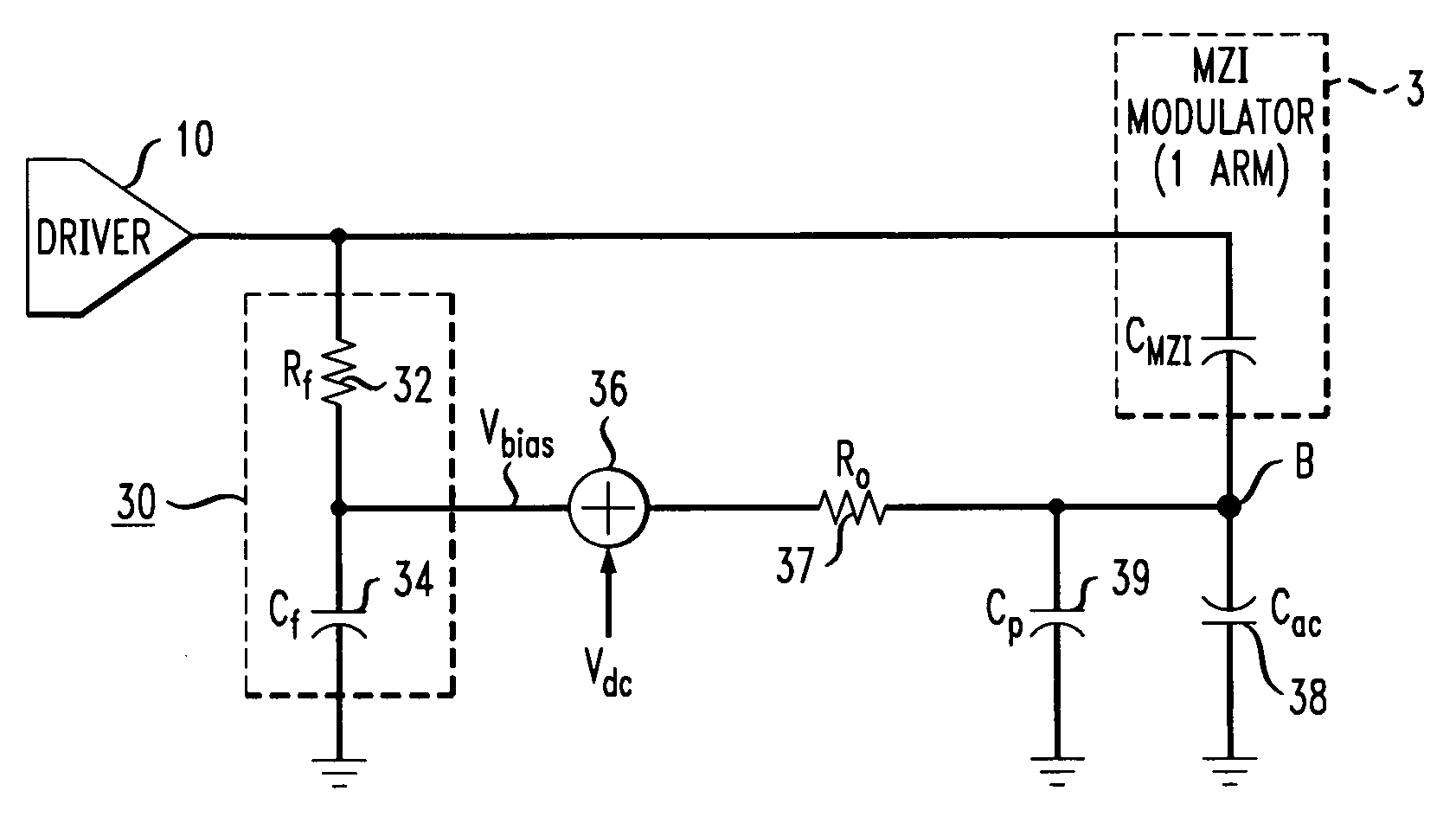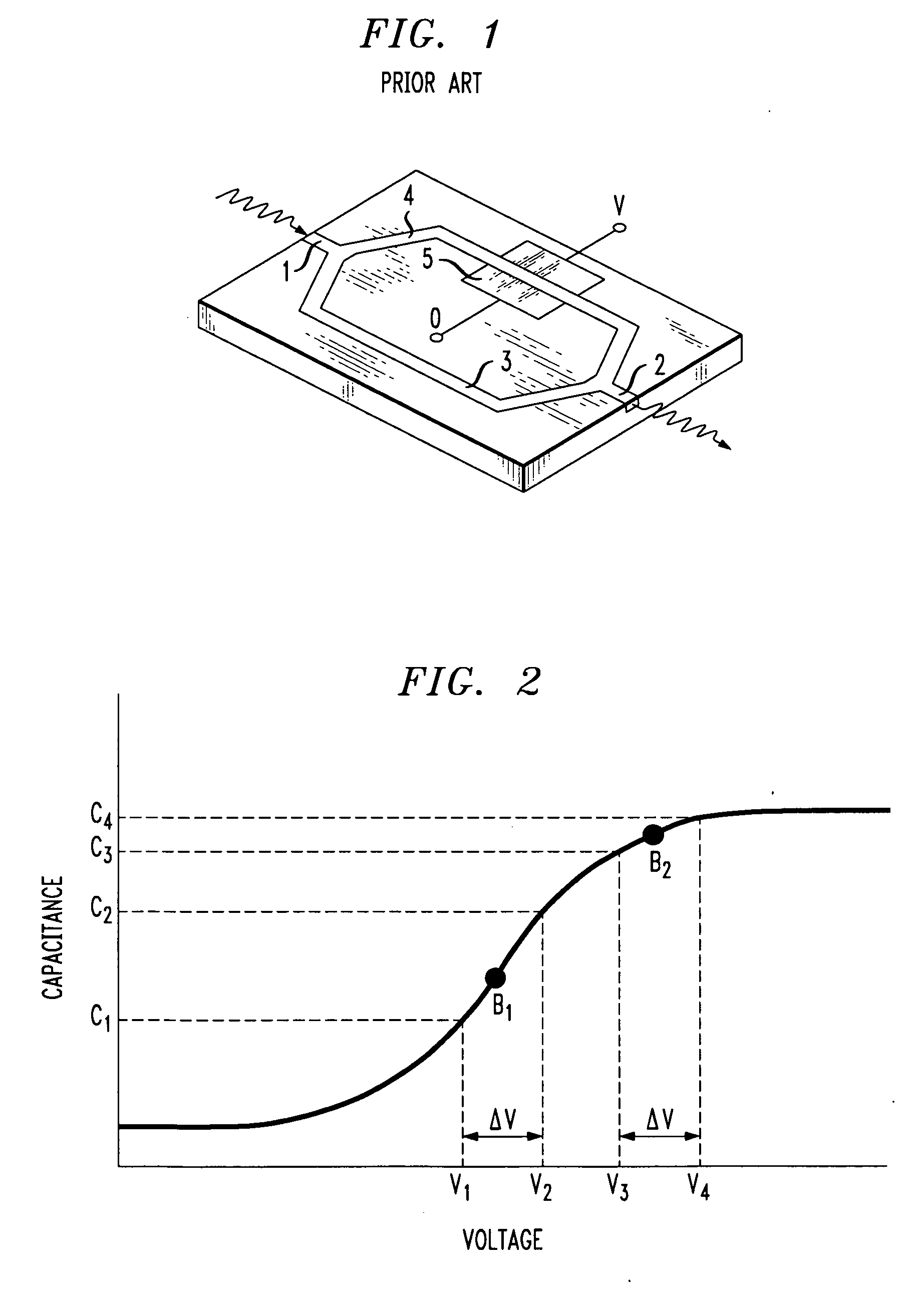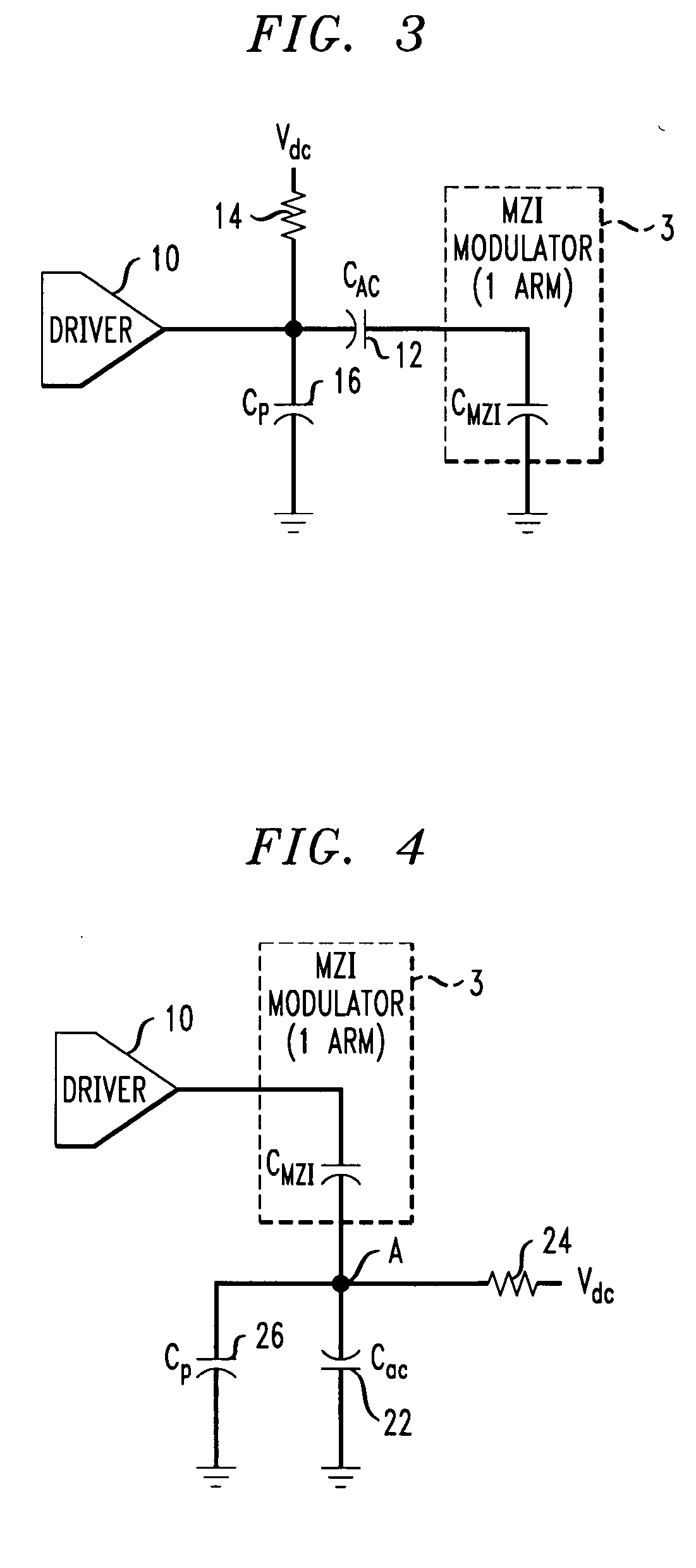AC-coupled differential drive circuit for opto-electronic modulators
a technology of optoelectronic modulators and differential drives, which is applied in the direction of electric/magnetic computing, instruments, and computations using denominational number representations, etc., can solve the problems of direct impact on the capacitor structure of phase-shifting elements, the dynamic behavior of the laser itself introduces distortion, and the use of lithium niobate-based optical devices in such situations is not an option, so as to extend the available bandwidth of the modulator
- Summary
- Abstract
- Description
- Claims
- Application Information
AI Technical Summary
Benefits of technology
Problems solved by technology
Method used
Image
Examples
Embodiment Construction
[0017]FIG. 1 illustrates an exemplary Mach-Zehnder modulator that may be configured to utilize the AC-coupled differential drive arrangement of the present invention. As shown, the modulator comprises an input waveguide section 1 and an output waveguide section 2. A pair of modulator arms 3 and 4 are shown, where each arm is formed to include a capacitor-like structure. U.S. Pat. Nos. 6,845,198 and 7,065,301 and incorporated herein by reference, describe the formation details of such modulators.
[0018] In operation, an incoming continuous wave (CW) light signal from a laser source (not shown) is coupled into input waveguide section 1. The CW signal is coupled into waveguide arms 3 and 4, wherein the application of the electrical drive signal to these arms will provide the desired phase shift to modulate the optical signal, forming a modulated optical output signal along output waveguide 2. A pair of electrodes 5 are illustrated in association with modulator arm 4, where a similar pa...
PUM
 Login to View More
Login to View More Abstract
Description
Claims
Application Information
 Login to View More
Login to View More - R&D
- Intellectual Property
- Life Sciences
- Materials
- Tech Scout
- Unparalleled Data Quality
- Higher Quality Content
- 60% Fewer Hallucinations
Browse by: Latest US Patents, China's latest patents, Technical Efficacy Thesaurus, Application Domain, Technology Topic, Popular Technical Reports.
© 2025 PatSnap. All rights reserved.Legal|Privacy policy|Modern Slavery Act Transparency Statement|Sitemap|About US| Contact US: help@patsnap.com



